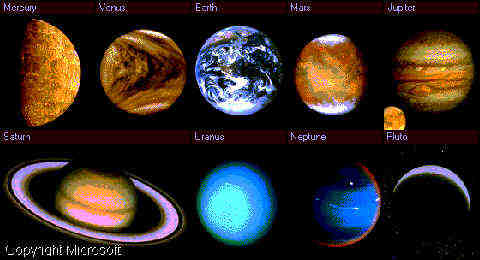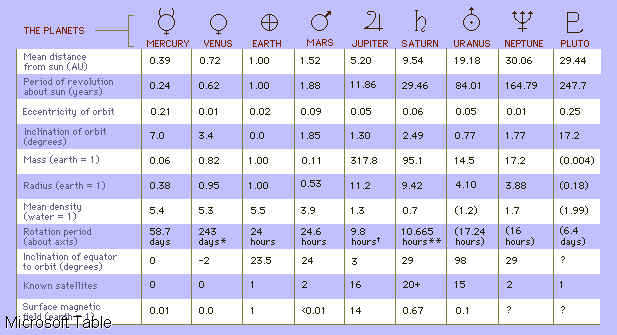









CONTENTS:-
Welcome to THE UNIVERSE !It's the world of huge explosions, tiny particles, fatal physical reactions, peaceful chemical reactions, low noises and loud bangs! You've got it (unless you're an idiot)! It's the UNIVERSE! This book will talk briefly about stars, the Solar System, Earth, planets, comets, theories, black holes and many exciting issues. All of the information in this book was written by MUSTAFA EL HOUSHY (1989 Noble Prize Winner and Professor of Everything in the University of Asyut).
*TRANSLATION INTO ENGLISH: We're about 2km above sea level. Light from the star bend in the air.
Sometimes scientists make the world boring. They use words you've never heard of us. Hey! Don't worry! This book will explain everything using the language you understand!
APOLOGY: If you're the type of person with space between your ears, then you won't be able to understand this book.
SOL is the Latin word for Sun. System is (believe it or not) system for English. So the Solar System is a group of planets, asteroids, moons and a Sun. What's unique about the Solar System is that it has life existing in it.
There are 9 planets in the Solar System, one Sun, over 30 moons and thousands of asteroids.
There are 9 planets in the Solar System. An easy way to remember their names is, "Many Very Energetic Men Jog Up Slowly to Newport Pagnell."

Here's to view a table with all of the boring details of the nine planets:

The planet Mercury got its name from the Roman God, Mercury. He was a messenger god. Mercury was a very quick runner that's why scientists gave the fastest planet in the Solar System this name.
Mercury is the nearest
planet to the Sun. Mercury like all of the other planets, has an elliptical
orbit (that means that the path looks like a  squashed
circle). The distance between it and the Sun changes throughout the year. It's
mean distance is about 58 million km (36 million miles).
squashed
circle). The distance between it and the Sun changes throughout the year. It's
mean distance is about 58 million km (36 million miles).
A spacecraft called Mariner 10 passed Mercury twice in 1975-6. It sent back pictures of a moonlike surface. It also managed to measure the temperature which turned out to be above 400C during the day and below 150 during the night. Mercury is criss-crossed by many escarpments. It is believed that they were formed when Mercury was formed. It also detected a magnetic field, which is 100 times smaller than the Earth's. Scientists believe that Mercury must have an outer core made out of iron, just like Earth, which produces a magnetic field as it moves. Scientists also believe that the crust is made out of an insulator. If that's not true, the iron liquid will freeze at night. Studies showed that Mercury has a very thin atmosphere, composing of sodium and potassium. These two substances diffuse from the crust. Mercury had probably collided with other planets (or proto-planets) billions of years ago. This might have caused light materials stripping away and resulting in a high density. Mercury does not have any moons. In 1991, radio telescopes on Earth showed that there are big sheets of ice in the Polar Regions, which were not covered by Mariner 10. The point in Mercury's orbit where the planet is closest to the Sun (called the perihelion) changes a small amount every orbit, but too much to be accounted by the other planets. This strange phenomenon was explained by Albert Einstein.
MOONS: Mercury has no moons.

